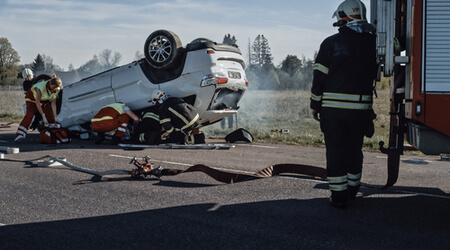
Burn injuries are very common in South Carolina and throughout the United States. American Burn Association statistics show that 450,000 people in the United States sought medical help in 2010 as a result of a burn. There were 45,000 hospitalizations due to burn injuries during this same year, and 3,500 fatalities caused by burns.
Burns can happen anywhere — including at home, at work and in the car — and the loss caused by burns throughout the United States is estimated at $7.5 billion annually by the Centers for Disease Control (CDC).
Contact Our South Carolina Burn Injury Lawyers Today
Our South Carolina personal injury attorneys at Joye Law Firm can help you get the compensation you deserve for a burn injury caused by someone else’s negligence. Respect, compassion and care are what you can expect from our lawyers and staff. Since 1968, we have helped injured people like you recover not just the money they are entitled to, but we’ve also helped them recover their lives. Let us help you, too.
Call Joye Law Firm. You can reach us at (888) 324-3100 or fill out an online form for a free case review. Joye Law Firm has offices in Charleston, North Charleston, Myrtle Beach, Clinton, Summerville, and Columbia, but our burn injury attorneys are ready to take on your case anywhere in South Carolina.
What Causes Burn Injuries?
Fire or flame injuries, scalding injuries, electrical injuries and chemical burns happen every day and affect individuals of all ages. These injuries happen not just in the home, but in a wide variety of settings and situations. For example, some of the causes of burn injuries include:
- Car accidents — The gasoline in a vehicle can ignite, causing the car to burst into flames and burn occupants. According to a report from the U.S. Fire Administration, fires in cars, trucks, vans and other highway vehicles account for 16 percent of all fires that fire departments respond to. Vehicle fires cause an average of 490 deaths and 1,275 injuries each year.
- Defective products — Dangerous products can spark or overheat and cause a burn, or they can start a fire leading to personal injuries. A wide variety of defective products can cause burns, particularly products that use batteries or combustible fuel sources.
- Apartment or hotel fires — The National Fire Protection Association reported 95,500 apartment structure fires in 2011 caused 4,425 injuries. The National Fire Protection Association also reports that firefighters respond to around 3,700 structure fires each year at hotels or motels. This means that one out of every 12 hotels or motels reports a fire in an average year. Each year, fires at hotels or motels cause an average of 12 deaths and 143 injuries.
- Workplace fires — The Bureau of Labor Statistics reports that fires and explosions were the cause of 3 percent of the 4,609 deaths at worksites in the United States in 2011
- Scalding injuries — Children and the elderly are the most susceptible to scalding injuries. The Electrical Safety Foundation International indicates that more than 100,000 people each year are treated in hospital emergency rooms as a result of being scalded. Hot tap water is the cause of a quarter of all scalding burns for children.
- Gas explosions — Gas explosions are an increasing concern. Pipeline Safety Awareness reports that gas pipelines stretch across more than 2.6 million miles of the U.S. Most of these pipelines (in excess of half) were constructed in the 1950s and the 1960s. Gas explosions can also occur at worksites, as a result of propane tanks for grills, in gas furnaces and water heaters and in any other situation where propane, natural gas or other fuels are used.
- Chemical accidents — While chemical accidents are often thought of as something that occurs in labs or on worksites, they can happen in the home as well. Household products such as bleach, concrete mix, cleaning products and pool chlorinators can all cause chemical burns.
- Electrocutions — OSHA reports that electrical burns are common after a worker is exposed to electrical current. However, flash arc burns and thermal contact burns are also possible due to exposure to electricity on worksites. When a worker is exposed to electrical current and electrocution results, the electrical current running through the body can result in damage to the cardiovascular system, the respiratory system and the central nervous system. This often causes death.
These are just some of the many causes of burn injuries that can occur in the United States.
Who is Responsible for a Burn Injury?
In the event that the burn injury occurred as a result of another party’s negligence, that party could be held responsible for the losses. For example:
- When a defective product causes injury, the manufacturer of the product could be sued in a products liability lawsuit.
- When a person suffers a burn injury in a hotel or apartment, the hotel owner or the apartment owner or landlord could be held legally responsible.
- A child or elderly person who suffers a scalding injury could potentially take legal action if someone else was responsible for the water’s being too hot.
- Regardless of fault, workplace burns could lead to workers’ compensation claims, which cover medical costs and provide payment for missed work. If a third party’s negligence was responsible for a workplace burn injury, then a personal injury lawsuit could be brought to recover broader compensation than what is available under workers’ comp.
- Gas explosions, chemical exposure or electrocution could all lead to lawsuits if someone was negligent. For example, if a worker on a gas pipeline punctured the gas line and caused an explosion, the gas company could be sued.
Get Help from Our S.C. Burn Injury Lawyers Today
If you’ve suffered serious burn injuries in any type of South Carolina accident, you need lawyers you can trust to help you get the money and benefits you deserve. At Joye Law Firm, our Charleston personal injury attorneys have nearly 300 years of combined experience helping injured victims after serious accidents.
For a no-cost consultation, call Joye Law Firm at (888) 324-3100 or fill out our online case evaluation form.

































